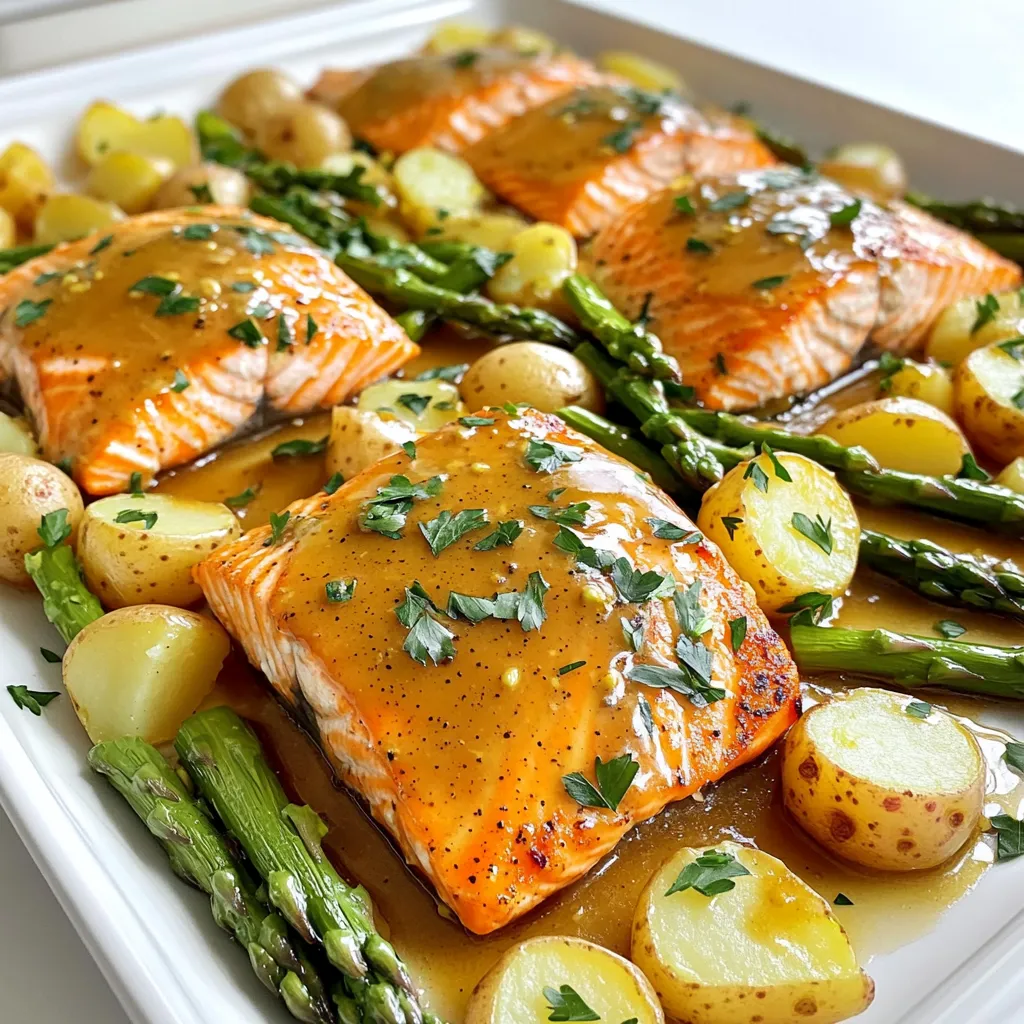
Welcome to a meal that’s both easy and full of flavor! This Sheet Pan Honey Mustard Salmon packs a punch with its sweet and tangy glaze. You’ll love how simple it is to prepare, with just a few fresh ingredients and minimal cleanup. Join me as I guide you through a quick cooking process that results in a delicious, healthy dish for your family. Let’s dive into this delightful recipe!
Why I Love This Recipe
- Flavor Combination: The sweet honey and tangy Dijon mustard create a delightful glaze that perfectly complements the rich flavor of the salmon.
- Quick and Easy: This sheet pan meal is not only simple to prepare but also requires minimal cleanup, making it perfect for busy weeknights.
- Healthy Ingredients: Packed with protein and healthy fats from the salmon, plus the nutritious veggies, it’s a wholesome meal that doesn’t compromise on taste.
- One Pan Wonder: Cooking everything on a single sheet pan means all the flavors meld together beautifully, resulting in a delicious and satisfying meal.
Ingredients
List of Ingredients
- 4 salmon fillets (about 6 oz each)
- ¼ cup Dijon mustard
- ¼ cup honey
- 2 tablespoons olive oil
- 1 tablespoon apple cider vinegar
- 3 cloves garlic, minced
- 1 teaspoon smoked paprika
- Salt and pepper to taste
- 1 pound baby potatoes, halved
- 1 pound asparagus, trimmed
- Fresh parsley, chopped (for garnish)
To make this dish, you need fresh salmon fillets, which are key for flavor. The honey mustard glaze gives a sweet and tangy kick. I love using baby potatoes and asparagus for sides. They roast well and add color to the plate.
Kitchen Tools Needed
- Sheet pan
- Parchment paper
- Mixing bowl
- Whisk
You will want a sheet pan for even cooking. Parchment paper helps with cleanup and keeps the food from sticking. A mixing bowl and whisk are perfect for blending the honey mustard glaze. This setup makes the process quick and easy.
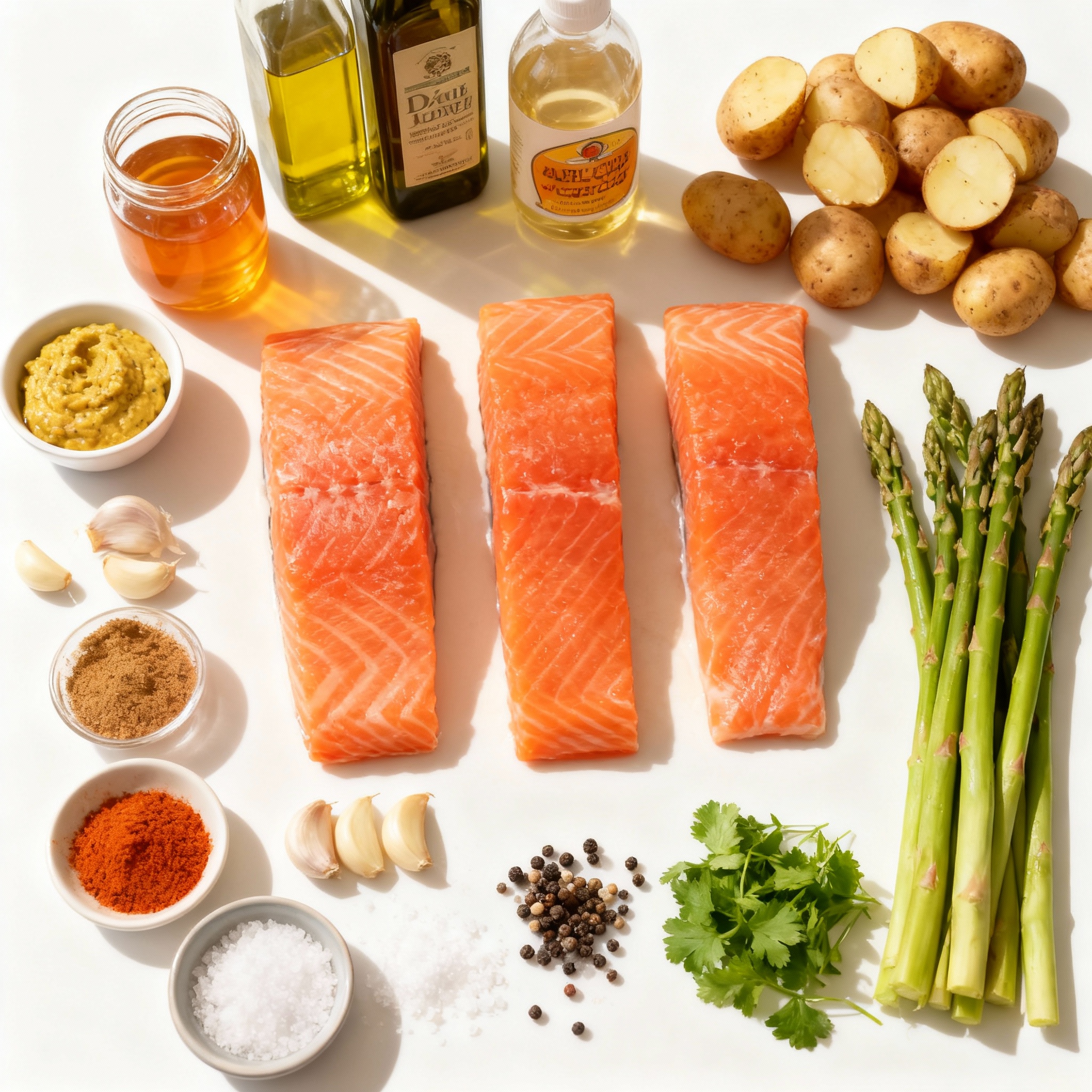
Step-by-Step Instructions
Preparation Steps
1. Preheating the oven
Start by preheating your oven to 400°F (200°C). This step is key to cooking your meal evenly.
2. Preparing the honey mustard mixture
In a small bowl, combine ¼ cup Dijon mustard and ¼ cup honey. Add 2 tablespoons olive oil and 1 tablespoon apple cider vinegar. Mix in 3 cloves minced garlic, 1 teaspoon smoked paprika, salt, and pepper to taste. Whisk everything until smooth. This will be your tasty glaze!
Cooking Process
1. Baking the potatoes
Place 1 pound of halved baby potatoes on one side of your sheet pan. Drizzle half of your honey mustard mixture over the potatoes. Toss them gently to coat. Bake these potatoes in the oven for 15 minutes. This gives them a head start.
2. Adding salmon and asparagus
After 15 minutes, take the pan out. Lay 4 salmon fillets in the center of the pan. Spoon the rest of the honey mustard glaze on top of the salmon. Now, add 1 pound of trimmed asparagus on the other side of the pan. Drizzle a bit of olive oil over the asparagus and season with salt and pepper. Return the pan to the oven for another 15-20 minutes. Keep an eye on the salmon. It should flake easily with a fork, and the asparagus should be tender.
Finishing Touches
1. Resting time and garnishing
Once everything is cooked, take the pan out of the oven. Let it rest for a few minutes. This helps the salmon stay juicy. Before serving, sprinkle chopped fresh parsley on top for a nice finish. Your sheet pan honey mustard salmon is now ready to impress!
Pro Tips
- Tip Title: Make sure your salmon is at room temperature before cooking for even cooking throughout.
- Tip Title: If you want a little extra crunch, broil the salmon for the last 2-3 minutes of cooking.
- Tip Title: Feel free to substitute the asparagus with any seasonal vegetable of your choice, such as green beans or broccoli.
- Tip Title: To save on cleanup, use aluminum foil instead of parchment paper for easy disposal.
Tips & Tricks
Best Practices for Cooking Salmon
Achieving optimal doneness
To cook salmon just right, aim for an internal temperature of 145°F. You can check this with a food thermometer. The fish should flake easily with a fork when done. If you want it a bit less cooked, remove it around 130°F for medium-rare. Remember, it will continue to cook after you take it out of the oven.
Flavor variations with marinade
You can change the flavor by adding different herbs or spices. Try dill or thyme for a fresh taste. You can also use maple syrup instead of honey for a sweeter twist. Just keep the base of Dijon mustard for that zingy kick. Feel free to experiment and find your favorite combination!
Sheet Pan Cooking Tips
Preventing sticking and ensuring even cooking
Always use parchment paper to line your sheet pan. This helps prevent sticking and makes cleanup easier. Make sure to space the salmon and veggies out on the pan. This way, they cook evenly and get that nice roasted flavor. Don’t overcrowd the pan; it can cause steaming instead of roasting.
Efficient cleanup methods
To make cleanup a breeze, soak your mixing bowl and utensils right after using them. This will help loosen any sticky residue. If you used oil on your veggies, sprinkle some salt on the pan after serving. This can help absorb excess grease before washing. Finally, use hot, soapy water for an easy clean!
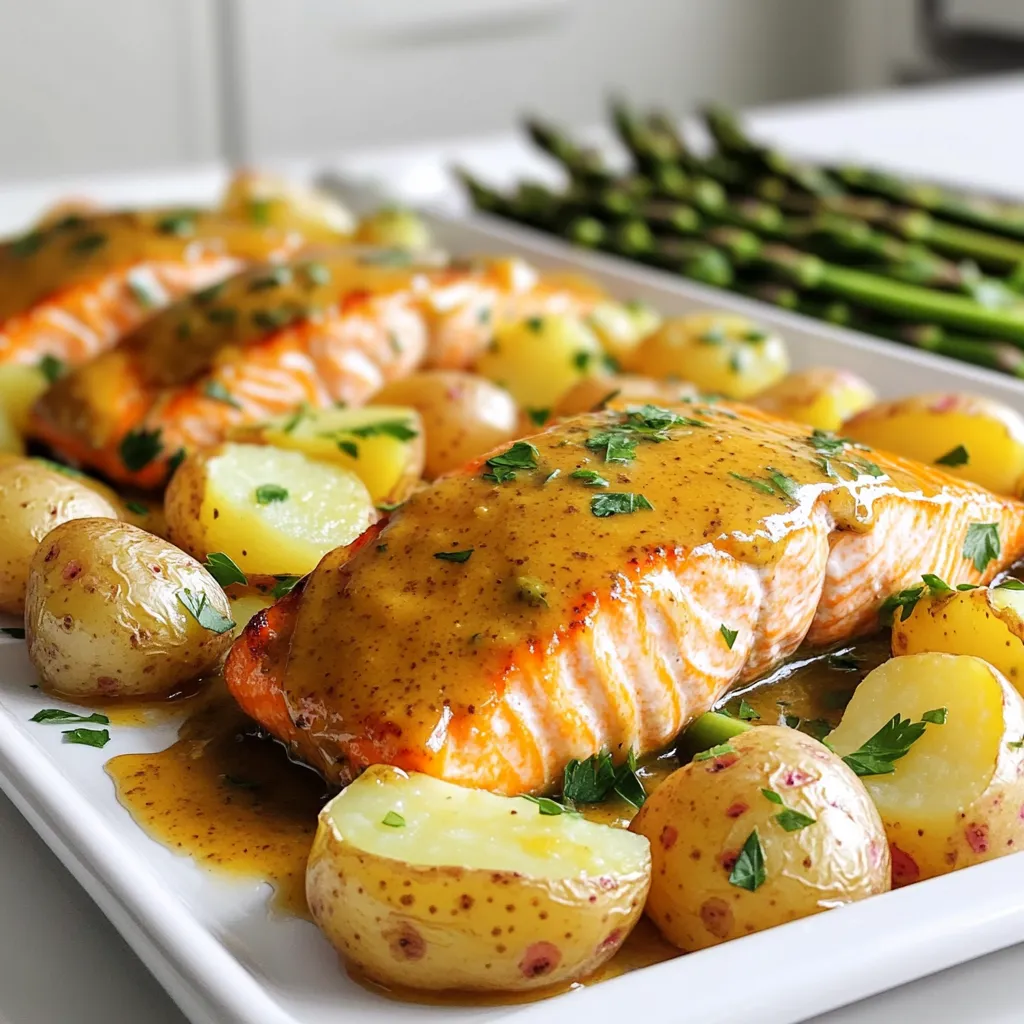
Variations
Ingredient Substitutions
You can swap Dijon mustard for whole grain mustard. This change adds a nice texture. You may also use yellow mustard if that's what you have. Honey can be replaced with maple syrup for a sweeter twist. Agave syrup is a good option too.
For vegetables, you can add bell peppers or zucchini. Carrots also work great. Feel free to mix in your favorite vegetables. Just make sure to cut them into similar sizes for even cooking.
Meal Pairing Suggestions
Serve this dish with rice or quinoa for a hearty meal. A light salad with greens and a vinaigrette pairs well too. You might enjoy roasted carrots or green beans as a side.
For drinks, white wine like Sauvignon Blanc is a perfect match. If you prefer non-alcoholic drinks, try sparkling water with lemon. A light iced tea also complements this meal nicely.
Storage Info
How to Store Leftovers
To store leftovers, let the salmon cool down first. Place the salmon, potatoes, and asparagus in an airtight container. You can store it in the fridge for up to three days. If you want to keep it longer, consider freezing it. Wrap the food tightly with plastic wrap, then place it in a freezer bag. This way, it can last up to three months in the freezer.
Reheating Instructions
Reheating leftovers can be tricky, but I have some tips. For the best results, use an oven. Preheat your oven to 350°F (175°C). Place the salmon and veggies on a baking sheet. Cover them with aluminum foil to keep moisture in. Heat for about 15-20 minutes, or until warmed through. This method keeps the salmon flaky and the veggies tender. If you're in a hurry, you can use a microwave. Just warm it in short bursts, checking often to avoid drying it out.
FAQs
Common Questions About Making Honey Mustard Salmon
Can I use frozen salmon?
Yes, you can use frozen salmon. Just make sure to thaw it first. Place the frozen fillets in the fridge overnight. If you’re in a hurry, you can also run them under cold water for a few minutes. Just remember that cooking times may be a bit longer for frozen salmon.
How do I know when the salmon is done?
Salmon is done when it flakes easily with a fork. It should have an internal temperature of 145°F (63°C). You can use a meat thermometer for accuracy. The salmon should look opaque and moist, not dry.
Nutritional Information Inquiry
Caloric content and health benefits
This dish is packed with nutrients. Each serving has around 400 calories. Salmon is rich in omega-3 fatty acids, which are great for your heart. The honey and mustard add flavor without too many extra calories. Plus, you get fiber from the asparagus and potatoes.
Can this recipe be made low-carb?
Yes, you can make this recipe low-carb. Simply replace the potatoes with cauliflower or zucchini. These veggies provide a similar texture without the carbs. You still get the tasty honey mustard flavor with the salmon and asparagus.
In this blog post, you learned how to make honey mustard salmon with easy steps. We covered ingredients, tools, and tips for perfect cooking. You can experiment with substitutes and meal pairings for great variety. Remember to store leftovers properly and follow reheating tips for best flavor. Cooking doesn't have to be hard. With these easy steps, you’ll impress friends and family with your new dish. Enjoy the deliciousness and healthy benefits of your honey mustard salmon!
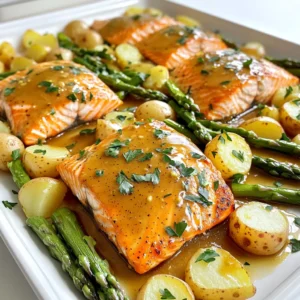
Sheet Pan Honey Mustard Salmon
Ingredients
- 4 fillets salmon
- 0.25 cup Dijon mustard
- 0.25 cup honey
- 2 tablespoons olive oil
- 1 tablespoon apple cider vinegar
- 3 cloves garlic, minced
- 1 teaspoon smoked paprika
- to taste salt
- to taste pepper
- 1 pound baby potatoes, halved
- 1 pound asparagus, trimmed
- for garnish fresh parsley, chopped
Instructions
- Preheat the oven to 400°F (200°C). Line a large sheet pan with parchment paper.
- In a small bowl, whisk together the Dijon mustard, honey, olive oil, apple cider vinegar, minced garlic, smoked paprika, salt, and pepper until well combined.
- Place the halved baby potatoes on one side of the prepared sheet pan. Drizzle half of the honey mustard mixture over the potatoes, tossing them to coat.
- Bake the potatoes in the preheated oven for 15 minutes.
- After 15 minutes, take the pan out of the oven and place the salmon fillets in the center of the pan. Spoon the remaining honey mustard glaze over the salmon fillets.
- Add the trimmed asparagus on the other side of the sheet pan. Drizzle with a little olive oil, and season with salt and pepper.
- Return the pan to the oven and bake for an additional 15-20 minutes, or until the salmon is cooked through and flakes easily with a fork, and the asparagus is tender.
- Remove from the oven and let rest for a few minutes. Garnish with chopped fresh parsley before serving.

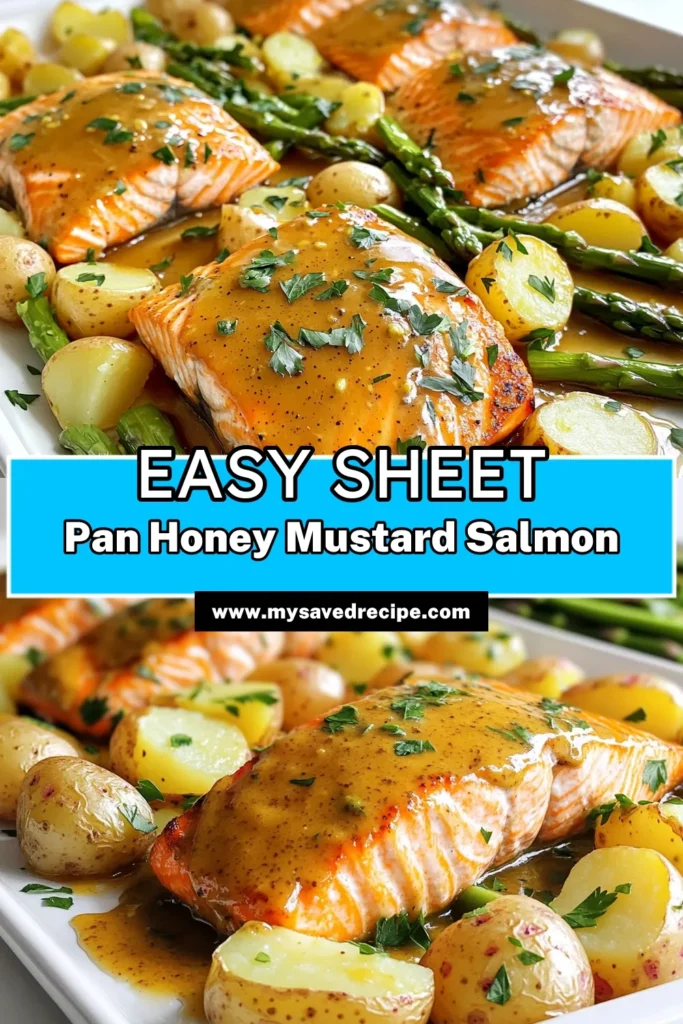
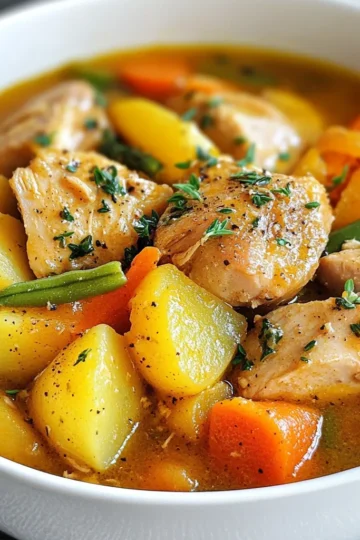
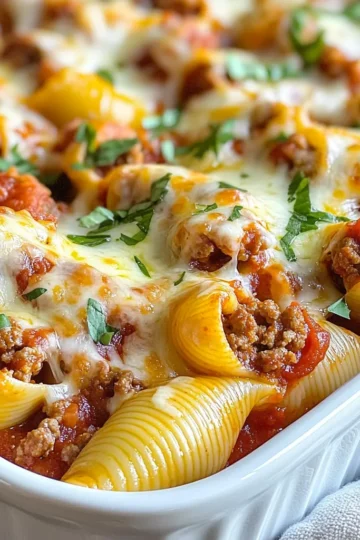
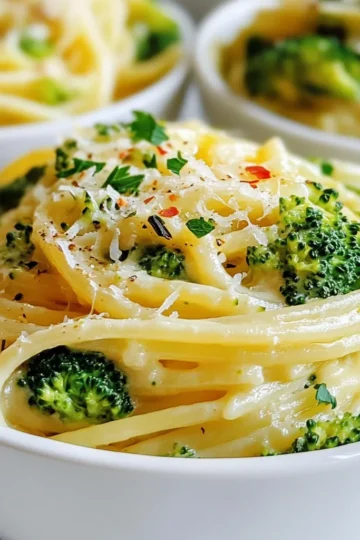
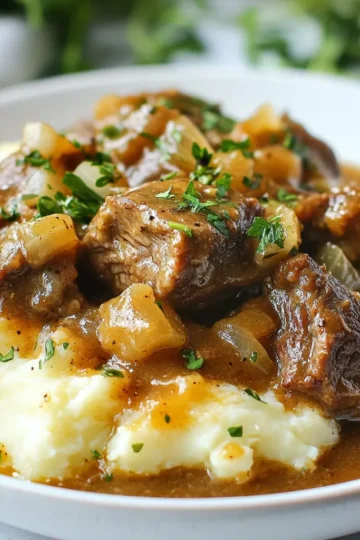
Leave a Reply